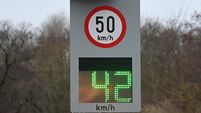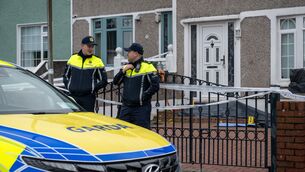Counting our chickens...
The total population now stands at 3.9 million, the highest since 1871, yet we are still far outnumbered by domestic animals in Ireland. There are almost seven million cattle in the country and the number of sheep, at 4.8 million, is also far higher. If poultry ever make a bid to rule the human roost, there are more than 13 million of them to lead the charge.
Statistics like this are the stuff of pub quizzes and board games and they can be found in the weighty and wordy Statistical Yearbook of Ireland 2003, published yesterday by the Central Statistics Office.
The yearbook presents a comprehensive picture of Ireland today. It provides detailed information across a wide range of topics. These include the population, labour force, education, justice, the economy, agriculture, industry, services, prices, housing, and even the weather.
For instance, did you know there were 20,000 marriages registered in 2002, the highest figure in 20 years?
Changing social structures are brought into sharp focus by the figures which show that more people live alone, divorces have spiralled and the number of children born outside wedlock now represent over one-third of all births. The number of divorced people increased from 9,800 in 1996 to 35,000 in 2002 and births outside marriage accounted for 31% of all births in 2002, compared with 6% 20 years earlier.
Non-Irish nationals make up 5.8% of the population and almost half the female population over 15 now work, compared to 30% in 1985. The participation rate for men has dropped from 72% to 70% over the same period.
Ireland’s growing wealth is also highlighted. Our Gross National Product in real terms is now at five times the level it was in 1960. The national debt as a percentage of GDP has fallen from 87.7% in 1990 to 28.1% in 2002.
More Irish people are travelling abroad. Visits abroad by Irish residents in 2002 were 22% higher than in 2000. The largest increase was on Continental European routes. However, the number of overseas visits to Ireland in 2002 was 4% lower than in 2000. Visits by North American residents were down almost 19%.
The most potent indicator of a changing Ireland comes in the form of prices. Today’s euro is worth a mere 2.4% compared to what it would have bought in 1922, the year the State was founded. Prices for everyday goods have soared dramatically even in the past four years. A leg of mutton is now almost 10 per kilo compared to 7 in 1998 and a kilo of cod now costs almost 14 compared to less than 10 in 1998.
The Yearbook 2003 is available from the Central Statistics Office Skehard Road, Cork or Government Publications Molesworth Street, Dublin 2.












